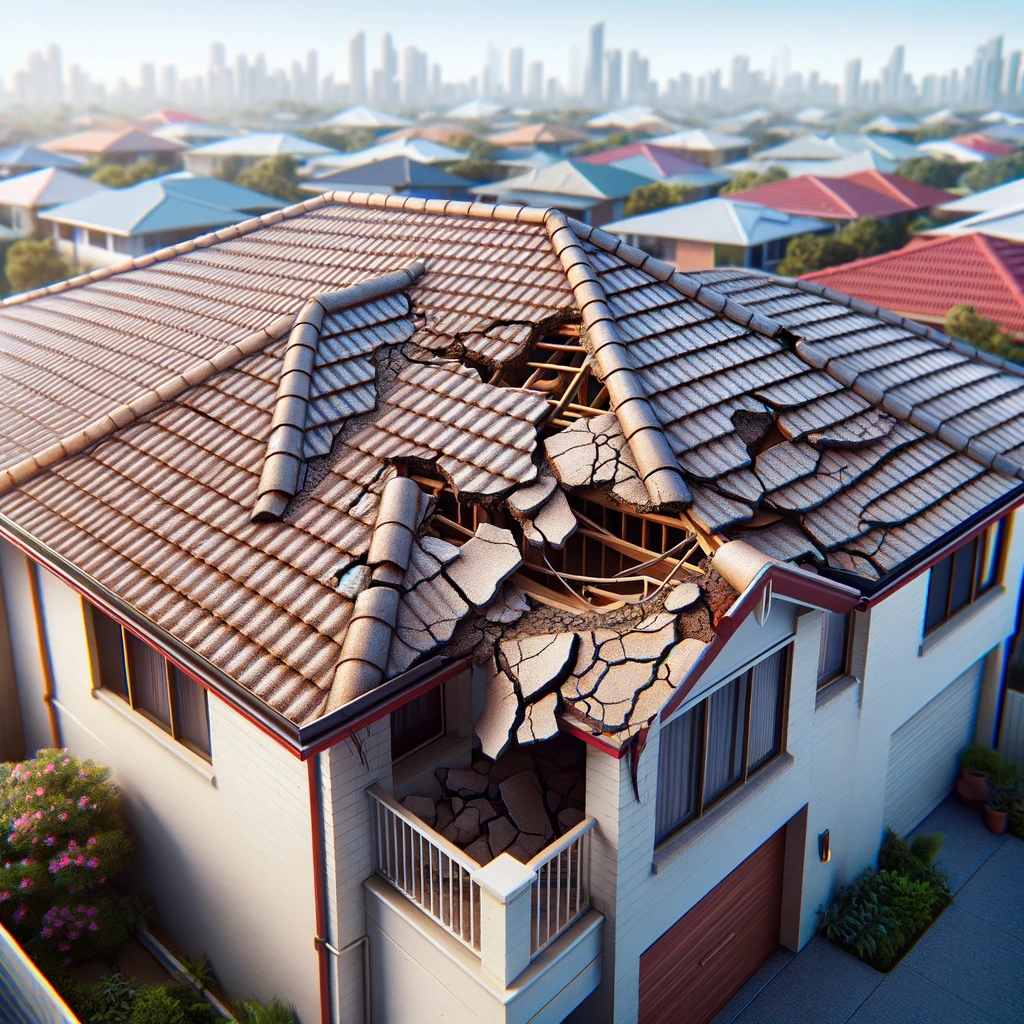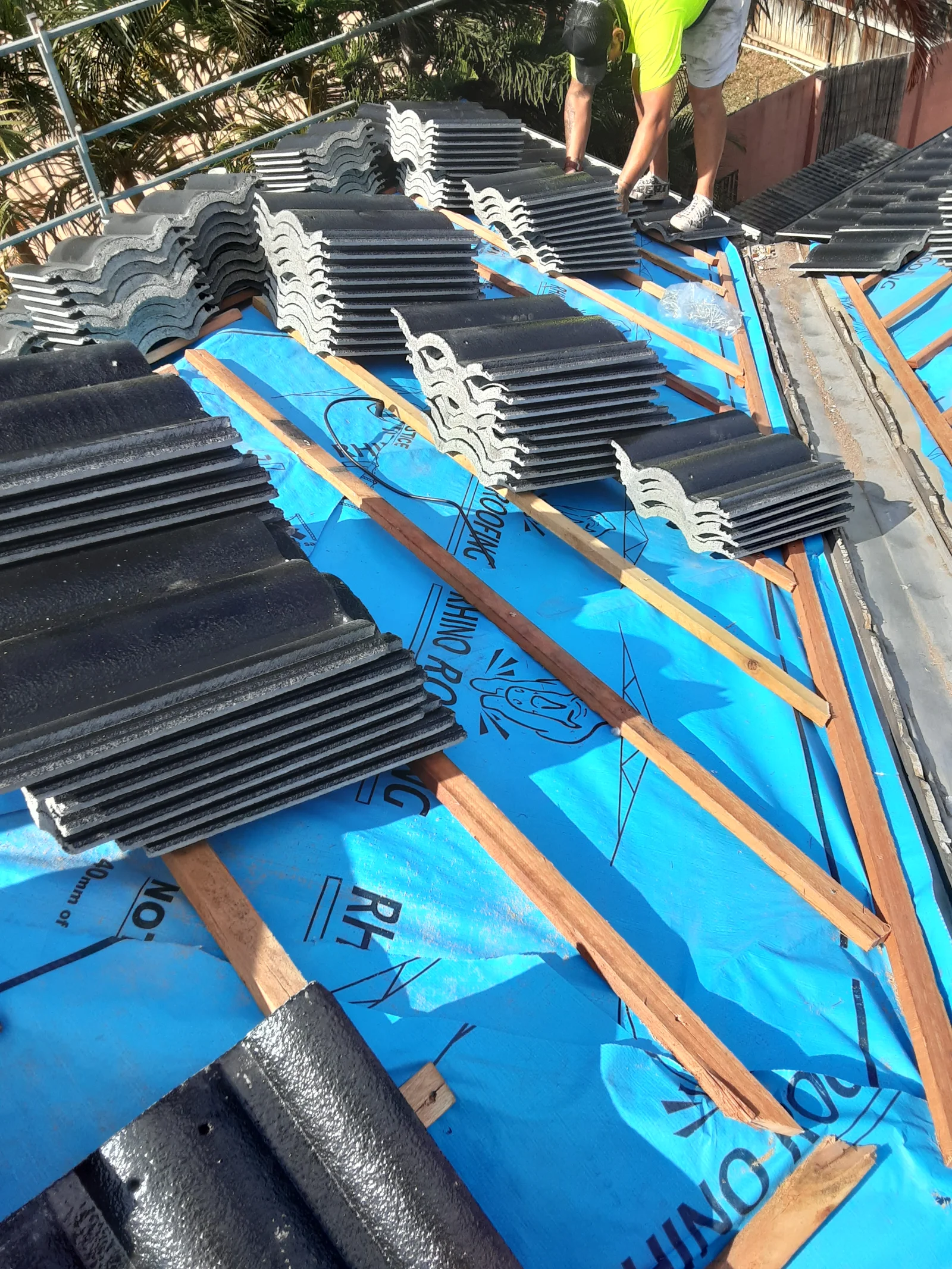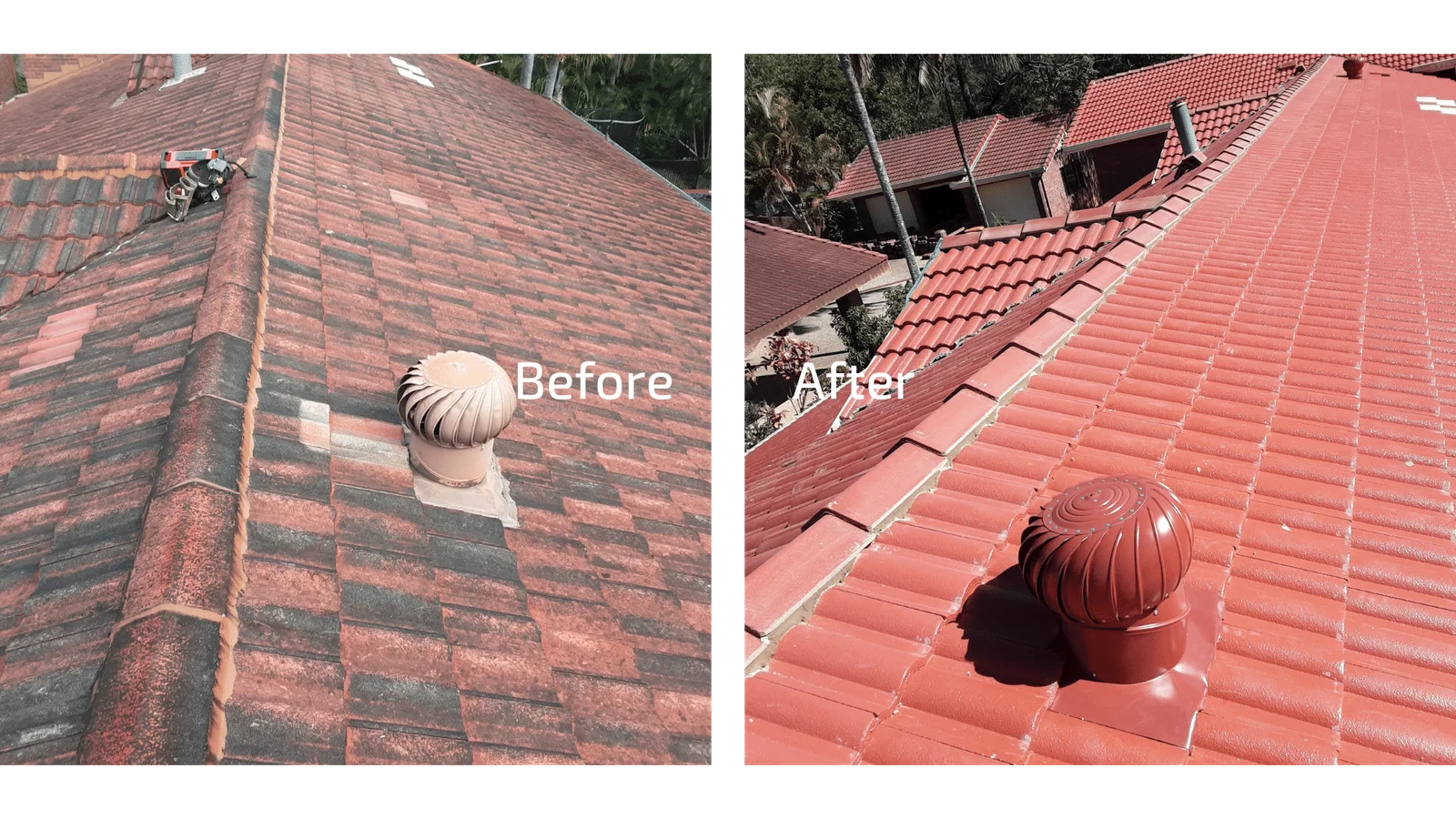You’re looking up at your roof and wondering if those missing and cracked tiles mean it’s time to call in the professionals. Your roof has been looking a little worse for wear recently, but how do you know if it needs repairs? Don’t worry, we’ve got your back. We’ll walk you through some of the most common tile roof problems so you can spot issues as soon as they appear. From damaged and loose tiles to leaks and blocked gutters, we’ll help you identify problems before they turn into expensive repairs. Read on and we’ll make you a roof repair expert in no time. With our guide, you’ll know exactly what to look for and when it’s time to pick up the phone.
Signs of Roof Damage Brisbane Homeowners Should Look Out For
The roof is one of the most important parts of any home, yet it’s often overlooked. However, if left unattended, minor roof damage can quickly become major and very costly. As a homeowner, it’s important to regularly inspect your roof and look for any signs of damage or disrepair.
Cracked or Missing Tiles
Broken, cracked or missing roof tiles are common signs that your roof may need repairs or replacement. Not only do damaged tiles affect the appearance of your home, but they also allow water and pests to enter. Check that tiles are securely in place and not visibly cracked.

Water Stains or Leaks
If you notice water stains, leaks or dripping in the attic or top floor ceilings, you likely have roof damage that requires immediate attention. Even small leaks can lead to expensive repairs if left unaddressed. Call a professional roofer right away to inspect and repair the leak.
Sagging Roof
An uneven, sagging or drooping roofline is a sign that your roof structure or framing has been compromised. Additional weight from water damage or lack of attic ventilation can cause roofs to sag over time. Have a roofer evaluate the underlying cause of the sag and recommend solutions to stabilise or replace the roof.
Moss or Algae Growth
While moss and algae themselves do not directly damage roofs, their presence indicates excess moisture which can lead to water damage or rot over time. Remove any moss or algae growth, improve attic ventilation, and check that drains and gutters are clear to prevent conditions that promote their growth.
Regular roof inspections and prompt action on any signs of damage will help ensure your roof continues to protect your home for years to come. Don’t hesitate to call in a professional if you have concerns about your roof’s condition. Their experienced eye can spot issues you may miss and recommend solutions to keep your roof in peak shape.
Identifying Roof Leaks: Causes, Signs and Solutions
If your tile roof has been around for a while, chances are leaks and damage have started to appear. Don’t worry, identifying the issues is the first step to getting your roof back in top shape.
Weather Damage
The sun and rain do a number on roofs over time. UV rays break down the materials, causing cracks and splits in the tiles, while water seeps into unsealed areas. Watch out for water stains on ceilings and peeling paint—these are signs that leaks have likely formed. The solution? Repair or replace damaged tiles and reseal the roof to prevent further weathering.
Loose or Missing Tiles
It’s easy for tiles to become loose or fall off completely, leaving gaps for water to get in. Give your roof a visual inspection and look for any tiles that appear uneven, damaged or missing. If you spot loose or missing tiles, it’s best to call a professional to securely reattach or replace them.
Flashing Issues
The flashing around pipes, skylights or chimneys is meant to provide a waterproof seal, but often fails over time. Check the base of any protrusions from your roof for cracks or holes in the flashing. You may need to reseal or replace damaged flashing to properly protect those areas.
Gutters and Downspouts
If your gutters are clogged or downspouts aren’t draining properly, water will pool on your roof and eventually find its way inside. Clean out your gutters and downspouts to allow for proper drainage and water flow away from the base of your home.
With regular roof inspections and proper maintenance, you can catch and remedy these common tile roof problems before major damage occurs. If any issues seem beyond a simple DIY fix, don’t hesitate to call a professional roofer for assessment and repair. Your roof’s health depends on it!
Cracked, Broken or Loose Roof Tiles: How to Spot and Repair Them
One of the most common problems with tile roofs are cracked, broken or loose tiles. These issues can lead to water damage if left unrepaired, so it’s important to inspect your roof regularly and address any problems promptly.
Cracked Roof Tiles
Over time, roof tiles can develop small cracks from weathering and age. Minor cracks may not necessarily lead to leaks right away, but they will allow water to seep in during heavy rains. To repair cracked tiles, apply roofing cement or sealant over the crack, then place roofing mesh or wire over the cement to reinforce the tile. For severely cracked tiles, it’s best to replace them.
Loose or Missing Roof Tiles
Roof tiles can become loose or detach completely due to wind, debris impact, or improper installation. Loose tiles will eventually fall off, leaving your roof vulnerable. To re-secure loose tiles, apply roofing cement underneath the tile, then nail the tile back in place with roofing nails. For missing tiles, you’ll need to replace them. Measure the size of the missing tile space and purchase matching replacement tiles. Secure the new tiles in place with roofing cement and nails.
Replacing Cracked or Missing Tiles
If the cracks in your tiles are large or tiles are missing completely, the only option is to replace them. Carefully remove any remaining tile pieces from the roof, then purchase matching replacement tiles. Apply roofing cement to the area where the new tiles will be placed. Position the new tile and secure it in place by nailing down all corners and sides. Apply roofing cement over the nails to seal everything in place.
Regular inspections and prompt repairs to your tile roof will help ensure it continues protecting your home for years to come. Call a professional roofer if you notice extensive damage or are unsure of how to properly repair or replace your roof tiles. They can inspect, diagnose any issues and make necessary repairs to get your roof back in top shape.
Other Common Roof Issues to Be Aware Of
Algae and Moss Growth

With time and exposure to the elements, algae, moss and lichen can build up on your tile roof. While not usually damaging in small amounts, excessive growth can lead to rot, leaks and reduced roof life. The growth is caused by moisture buildup and lack of sun exposure. To prevent overgrowth, improve attic ventilation and clear debris from gutters and downspouts regularly to improve water runoff. You may need to scrub off any existing growth and treat your roof with a moss inhibitor product.
Loose or Missing Tiles
Over time, tiles can become loose or even fall off completely, leaving your roof vulnerable to leaks and other damage. Loose tiles are often caused by failure of the tile adhesive or damage from extreme weather. It’s a good idea to inspect your tile roof for any loose, cracked or missing tiles at least once a season and after major storms. Have a roofing professional repair or replace damaged tiles as soon as possible.
Improper Flashing
The flashing around skylights, chimneys, vents and other protrusions is meant to form a waterproof seal, but improper installation or damage can lead to leaks. Look for signs of water damage or stains around these areas, especially on ceilings inside the attic. Have a professional roofer inspect and repair or replace damaged or improperly installed flashing.
Structural Damage
Major events like fires, storms, earthquakes or impacts can potentially cause structural damage to your tile roof. Look for signs like sagging, unevenness or damage to the wood or metal roof structure under the tiles. Structural damage requires emergency repair by a licensed roofer to prevent collapse. They can inspect, repair or replace damaged materials to restore stability and safety.
Regular inspection and occasional professional roof tune-ups are the best ways to catch these common issues early and prevent costly damage. Address problems as soon as possible to maximise the lifespan of your tile roof. An experienced roofer can properly assess issues, provide solutions and handle necessary repairs to keep your roof in tip-top shape for years to come.
Roof Repair Brisbane FAQs: Your Top Questions Answered
How can I tell if my tile roof needs repairs?
There are a few signs that your tile roof may need some TLC. Loose, cracked, or missing tiles are obvious red flags. Walk around the exterior of your home and look for any tiles that are visibly damaged or not sitting flush with the rest of the roof. Even a single loose tile can lead to leaks, so it’s best to have it repaired or replaced as soon as possible.
What causes roof tiles to become damaged?
Roof tiles suffer wear and tear over time due to exposure to the elements. Extreme weather like high winds, heavy rain, and hail can stress and weaken tiles. Temperature fluctuations that cause expansion and contraction can also loosen tiles and weaken the underlying roof structure. If your home was built before 1990, your roof is more prone to damage since building standards and materials have improved a lot since then.
When should I consider roof restoration or replacement?
If you notice extensive damage like cracks in many tiles, leaks inside the attic or top floor rooms, or parts of the roof visibly sagging or buckling, it’s time for major roof work. Roof restoration involves repairs, cleaning, and re-sealing the existing tiles to extend the life of your roof. However, if more than 20-30% of your tiles are damaged, or if your roof is more than 20-25 years old, replacement may make more financial sense.
Roof work is dangerous and not recommended for DIY. Roof restoration and replacement are big jobs that require professional help to ensure it’s done properly. An experienced roofing company like Storm Call Roofing can inspect your roof, determine whether spot repairs, restoration or full replacement is needed, and provide an accurate quote so you know exactly what to budget for to protect your home. They use the latest tools and materials to get your roof back in top shape and guarantee their work.
Conclusion
So there you have it – a quick guide to spotting the most common tile roof problems. Don’t ignore small issues like a few cracked or missing tiles, as they can quickly turn into major leaks or full roof replacements if left unchecked. Stay vigilant after big storms, do a visual inspection every year or two, and call in a professional roofer at the first sign of trouble. Your roof works hard to protect your home, so show it some love in return. Keeping on top of repairs will save you money and headaches down the road. With a bit of DIY roof maintenance and knowing when to call the experts, you can keep your tiles in tip-top shape for years to come.





